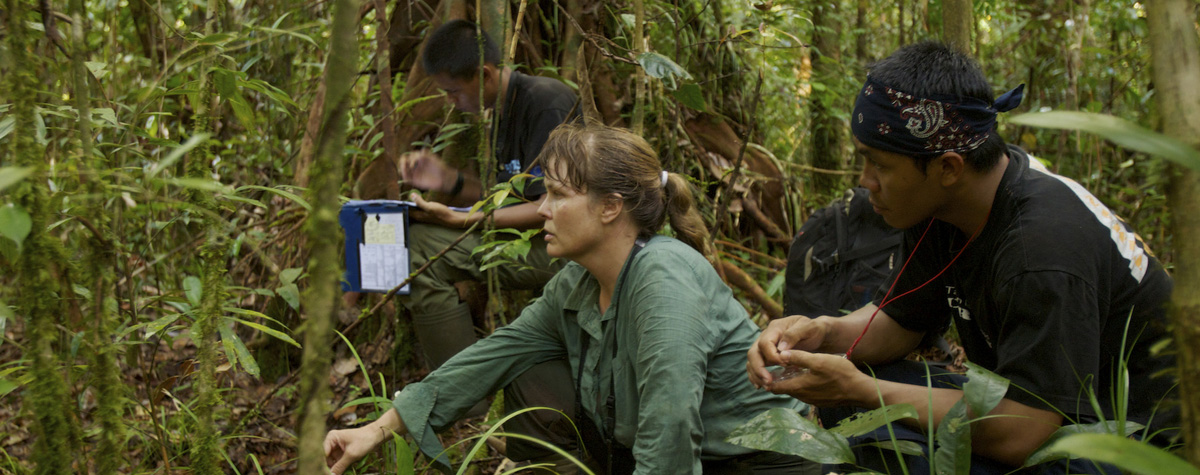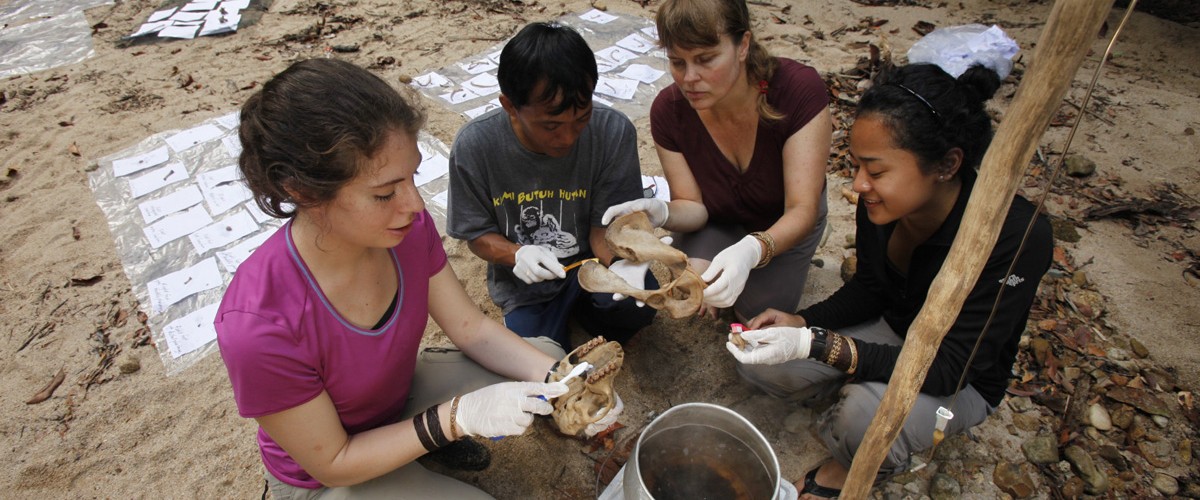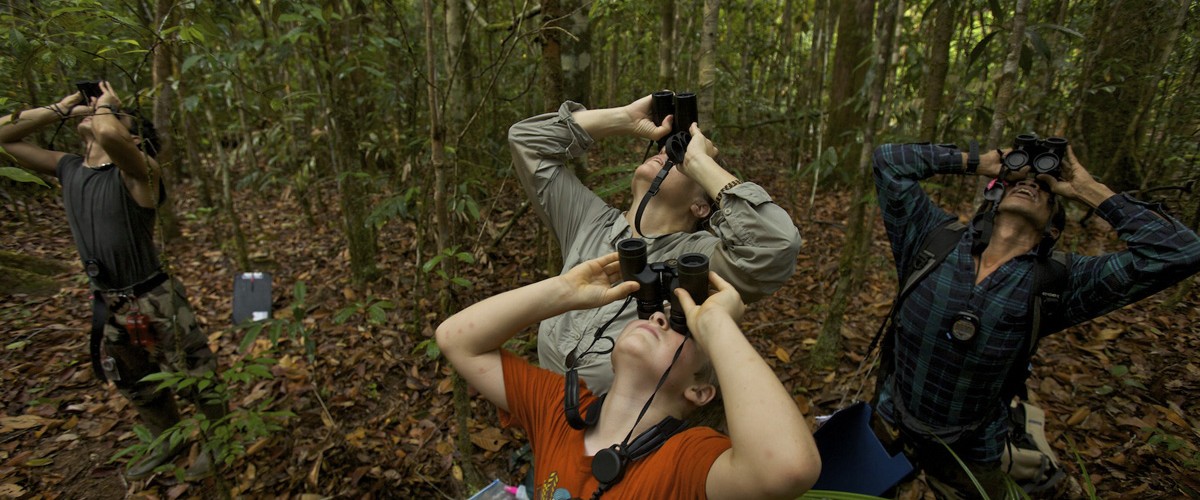By Tasya Azzahra Priandani, Student Researcher
Hello, my name is Tasya Azzahra Priandani. I am an eighth semester student from the Faculty of Biology at the Universitas Nasional (UNAS) in Jakarta. I am writing this article to share my research experience in Gunung Palung National Park, which has been full of fun and learning.
When I was in high school, I was always interested in nature and the biodiversity of Indonesia. I felt grateful that I was born in this beautiful country. When I started college, studying in the Faculty of Biology at UNAS, I dreamed of setting foot in Kalimantan (Borneo) to conduct research. My lecturer at UNAS, Dr. Sri Suci Utami Atmoko, allowed my dreams to come true by opening the gates of research in the land of Borneo. I could research the Bornean Orangutans (Pongo pygmaeus wurmbii)!
When I first stepped into the Cabang Panti Research Station in Gunung Palung National Park, I was amazed by the condition of the habitat and the diversity of fauna and flora within it. This area has eight different habitat types which are divided into peat swamp forest, freshwater swamp forest, heath forest, alluvial bench forest, lowland sandstone forest, lowland granite forest, upland granite forest, and montane forest, supporting an array of Indonesia’s endemic species, including orangutans. Not only the presence of fauna, but also the flora attracted me to this forest because there are various types of plants that have unique morphological structures.
When following orangutans, I accompany Pak Alang (Hassan), Bang Toto, Bang Sabta, Bang Dika, Bang Dang, Bang Jaka, Bang Yogi and Bang Sahril in data collection. Usually, we go in a team of 3 to 4 people to follow orangutans. During the first week, I learned about data and sample collection. One of my first follows was with an adult female named Tari and her infant who were in a Ficus tree (family Moraceae). They had a “party” with a flanged male named Alfred. The existence of these three individuals together in one tree amazed me with their morphology and behavior. I observed Tari make a vocalization called a kiss squeak and Alfred eating Ficus with an interesting technique of pulling on twigs while he was lying down. This follow made me excited to meet more individual orangutans and see the differences in behavior and morphology they have.

I continued going on follows after that first week. Each day we depart from camp at 4:00AM to walk through the forest trails to the orangutan sleeping nest location and wait for the orangutan to wake up. Data collection is carried out throughout the day until the orangutan builds a sleeping nest. The behaviors of the orangutan recorded include resting, eating, socializing and traveling, with observation intervals every 5 minutes, or when the primary activity changes, until the orangutan falls asleep in their nest. Normally we continue for 5 days of observation.
We also collect urine and fecal samples, which is usually done when the orangutan first wakes up and urinates and defecates. When orangutan urine is collected, we then use urine test strips (called Chemstrips) in the forest to check for different health indicators. The feces is then collected each time the orangutan defecates and is later taken to the lab back at camp for analysis. Urine and feces from orangutans can help us understand orangutans’ health condition.

We also collect plants that orangutans are eating, and are still in intact condition, that have fallen to the ground. If the orangutans are eating, the hunt for food samples begins!
The field assistants and I collect food samples from the ground and later bring them back to the lab at camp for processing after the follow has ended. Processing the food samples I collect is very interesting because they need to be separated by the parts eaten and not eaten. For example, the different potential parts are fruit flesh, skin, seeds or whole fruit; young leaves and old leaves, and tree bark or the cambium from the bark.

The collection of these foods is essential to my research project. The goal of my senior thesis is to look at the secondary metabolites in orangutan foods to determine the medicinal potential of plants foods. Hopefully, this research can provide information in the future about orangutan foods that can be used as a source of natural medicinal plants for animals and humans.

Not only do I enjoy data collection, but I also have lots of fun at camp with the field assistants and employees of Gunung Palung National Park. We always talk, sing, play games and cook together. I will never forget this experience! I am still doing this research and I hope that in my remaining time at camp there will be more experiences and lessons that I can learn. I am so grateful for this experience. Thank you!

Management of Cabang Panti Research Station is conducted by the Gunung Palung National Park Office (BTN-GP) in collaboration with GPOCP/YP. Scientific research is carried out in conjunction with the Universitas Nasional (UNAS) and Boston University.









